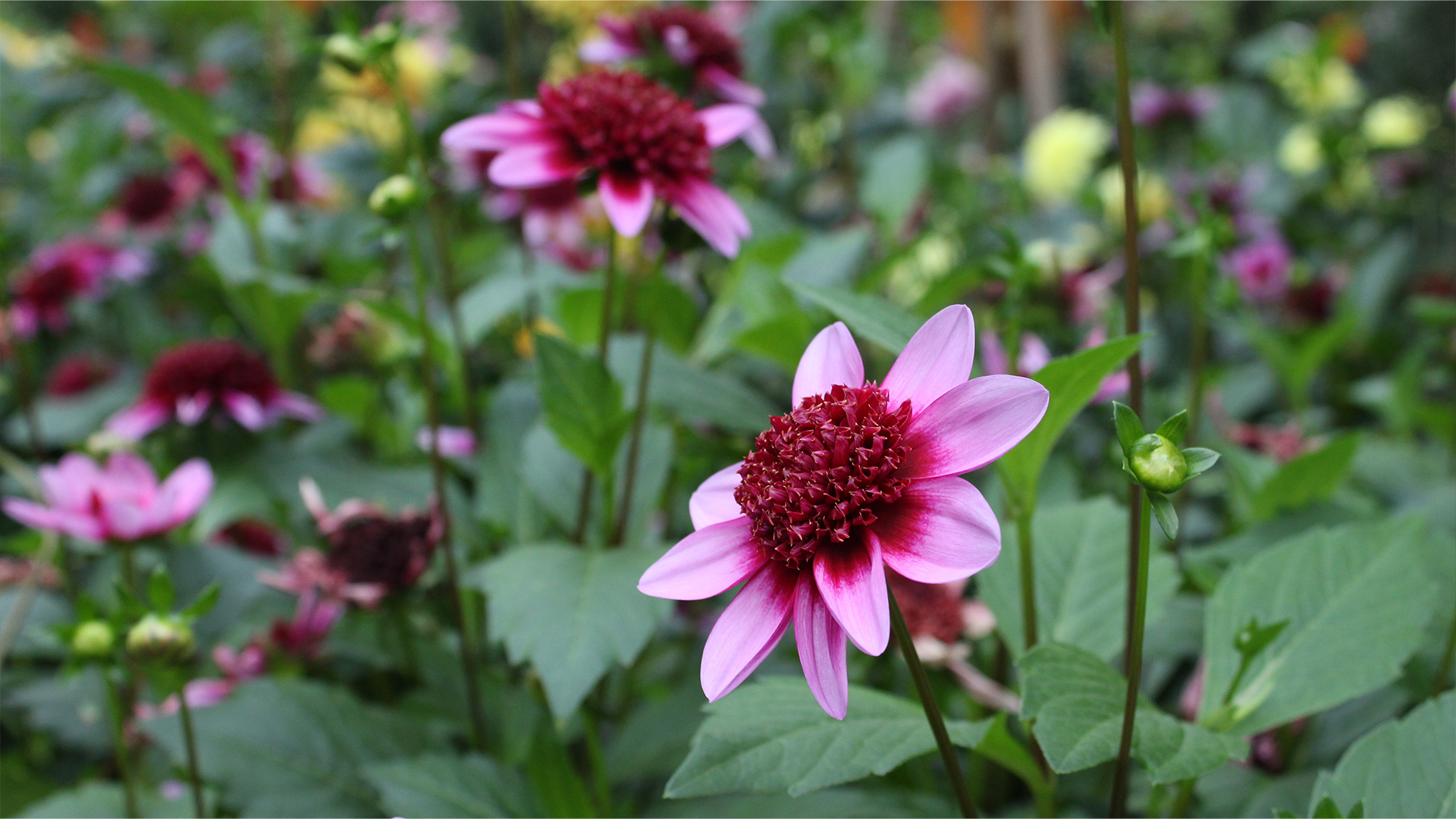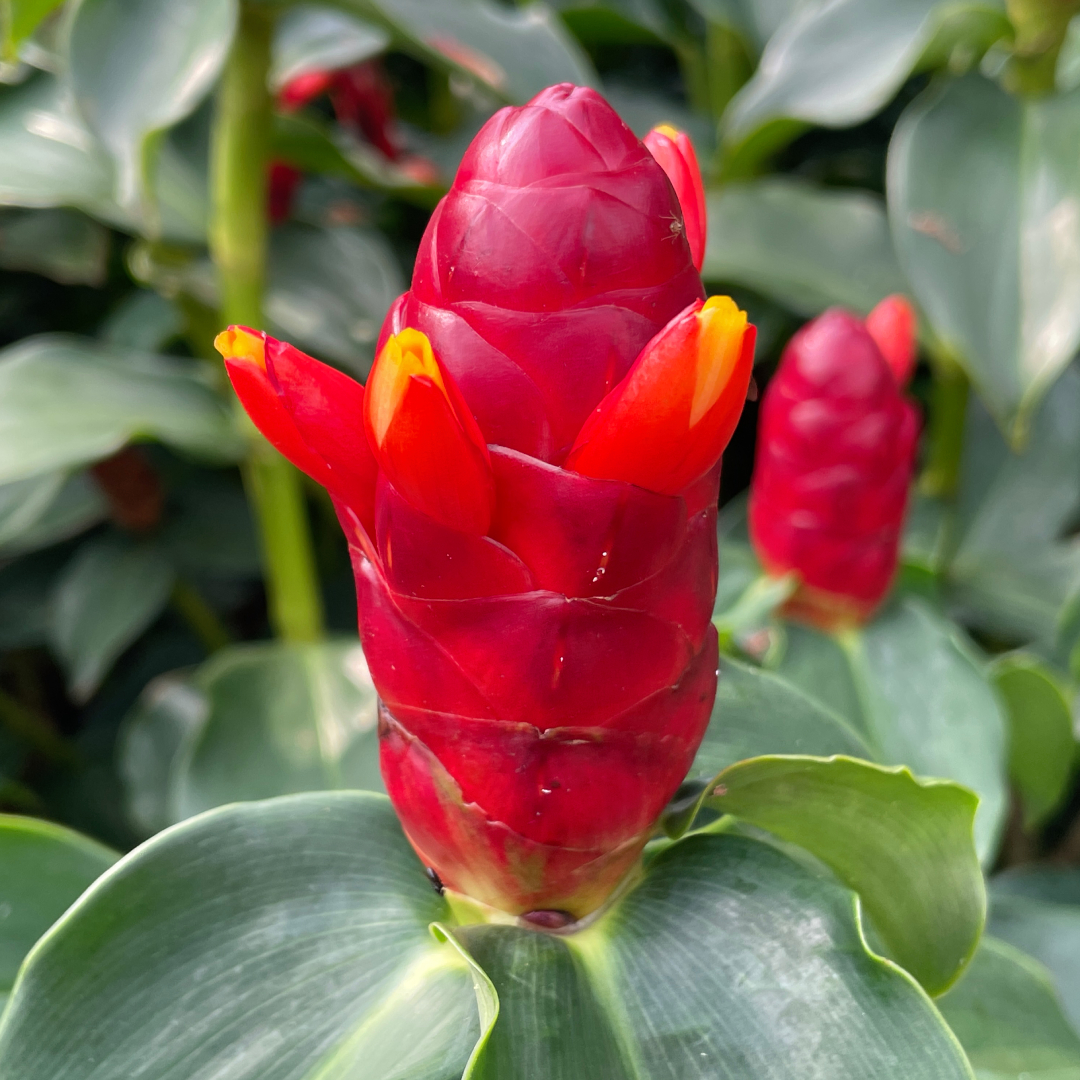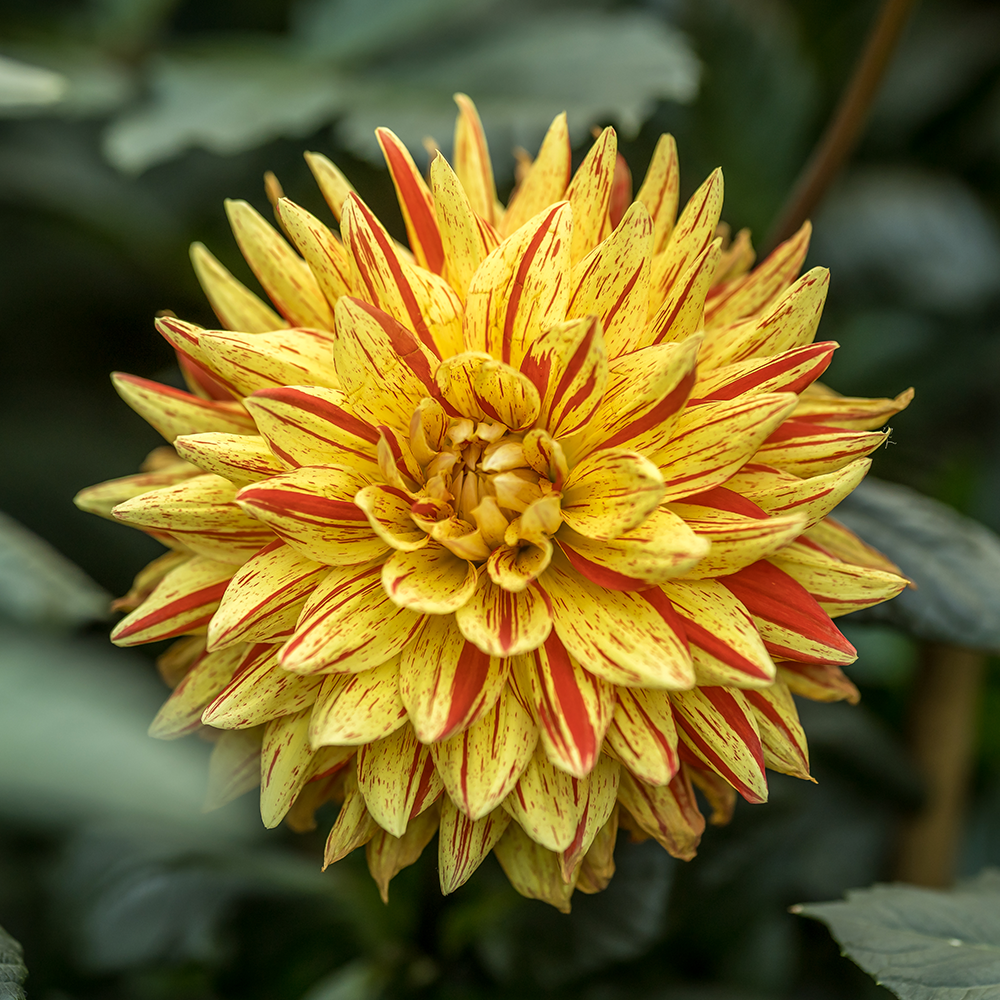Sakura (Prunus serrulata, P. pendula, and selected other species, cultivars, and hybrids)
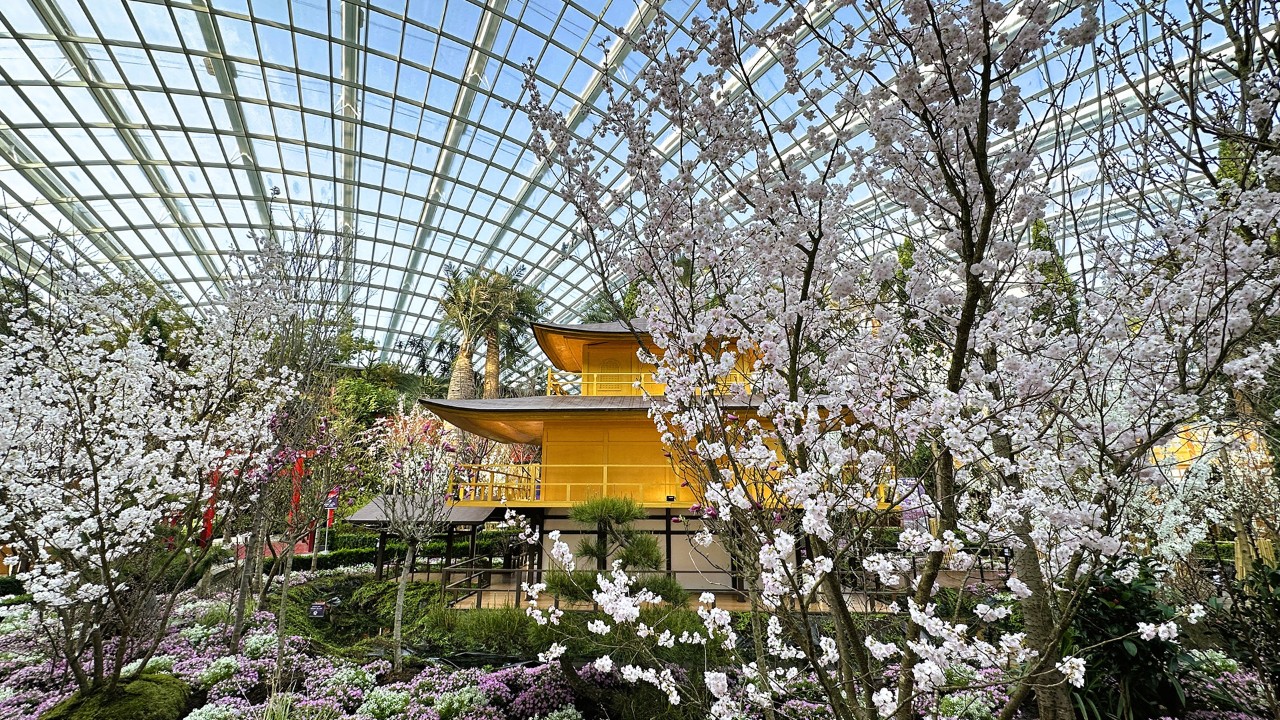 Beautiful Sakura trees enhancing the landscapes surrounding the Golden Pavilion.
Beautiful Sakura trees enhancing the landscapes surrounding the Golden Pavilion.
The Prunus genus has a global presence and is native to various regions such as temperate North America, the Neotropics of South America, and temperate and tropical regions of Asia and Africa. In total, there are about 370 accepted species within the genus. This genus exhibits a variety of different growth forms, from low shrubs to trees that may be evergreen or deciduous. It includes several delicious, economically important fruits, including cherries, plums, peaches, almonds and apricots.
Interestingly, Prunus and roses (Rosa spp.) are botanical relatives belonging to the rose family (Rosaceae), one of the major angiosperm families. All wild species of Prunus are five-petalled white to pink flowers adorned with numerous stamens, although many of the cultivated forms are be double-flowered with numerous petals and may have few to no stamens. Many ornamental Prunus trees flower prolifically, adding vibrant hues to gardens and landscapes when blooming en masse in a range of beautiful colours like white, pink, purple and red.
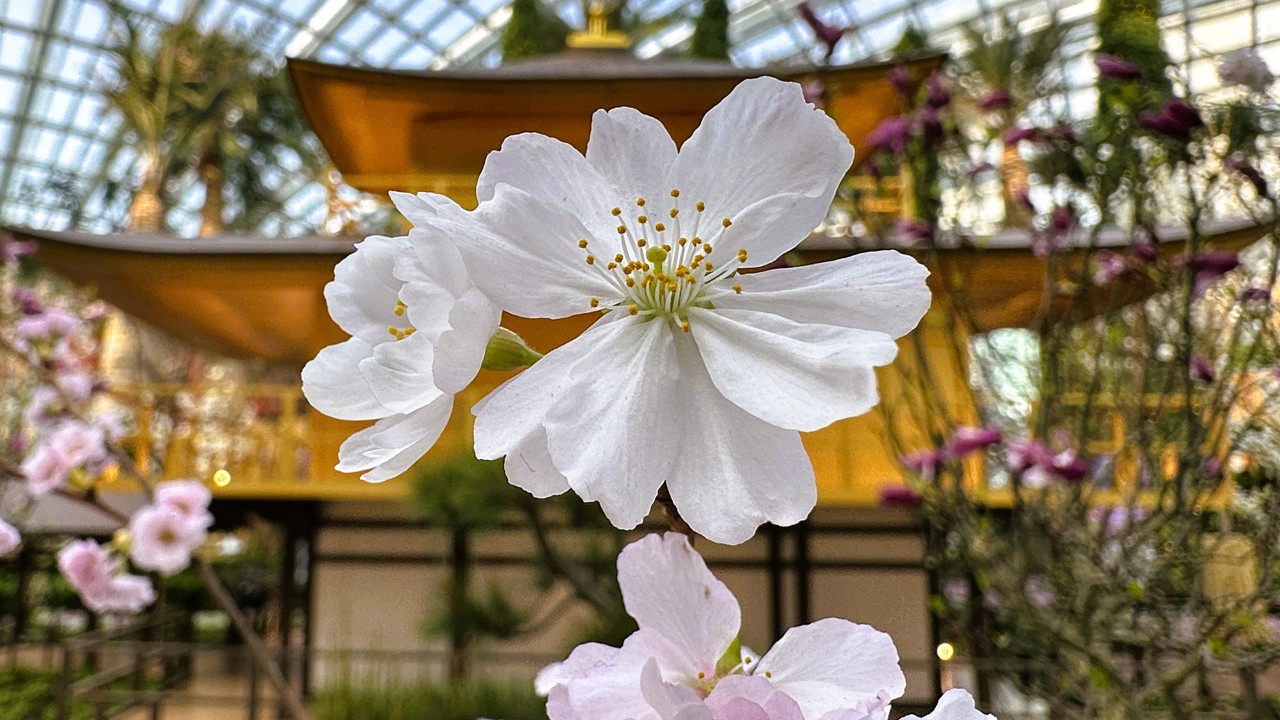 Prunus ‘Accolade’ exhibiting blossoms of pink and white hues on the same tree.
Prunus ‘Accolade’ exhibiting blossoms of pink and white hues on the same tree.
On display, there are Prunus x yedoensis and Prunus ‘Accolade,’ a few of the incredibly early flowering ornamental, deciduous cherry trees. Prunus ‘Accolade’ is a well-known hybrid cross between Prunus sargentii (Sargent’s cherry), a species cherry that offers something interesting in all seasons, and the small, winter-flowering Prunus x subhirtella (Higan cherry). The blossoms open pink and gradually fade to soft pink and white as the flower ages.
Owing to its parentage, this tree is one of the first ornamental cherry trees to come into flower during spring, producing semi-double pink flowers profusely very early in spring, when most other ornamental temperate plants are still in hibernation. Depending on the weather, it may a few flowers during winter, but tends to give its most reliable display in spring time. This proven cultivar won the First Class Certificate in 1954, the RHS Award of Garden Merit (AGM) in 1952 and was reconfirmed as an AGM awardee in 2002.
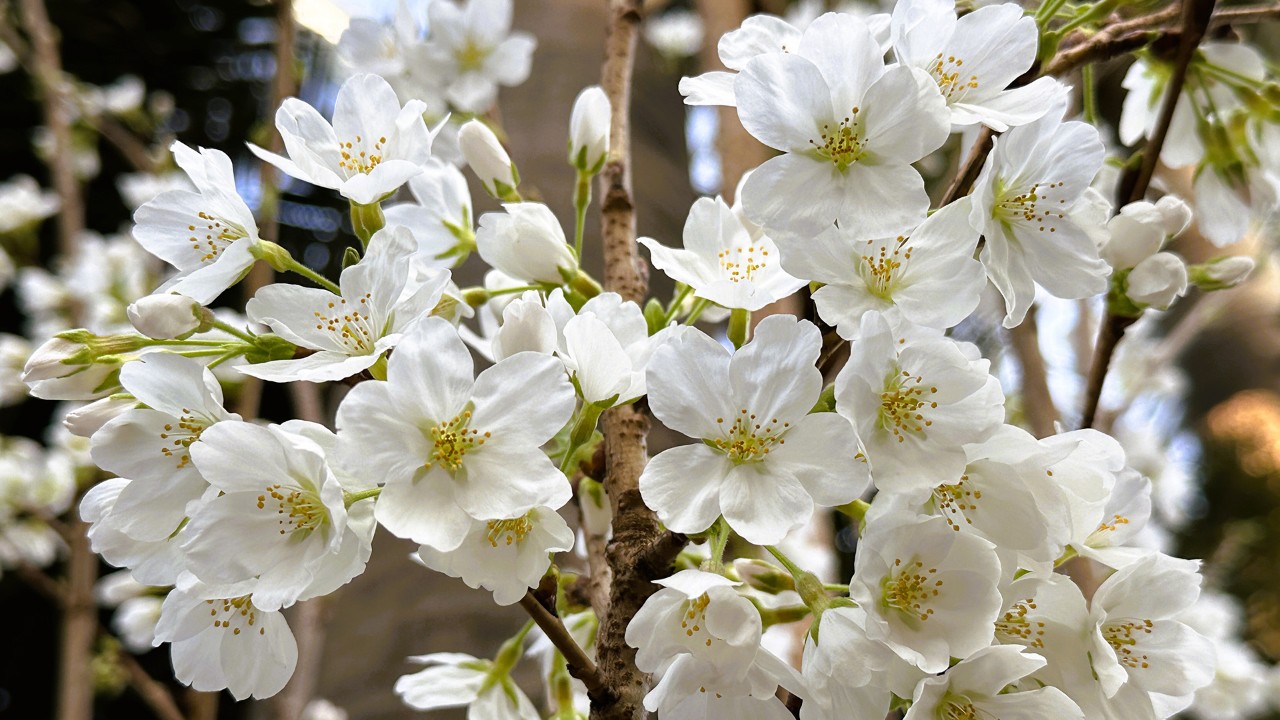 Prunus x yedoensis exhibiting white flowers on a tree, indicating the blooms are already in its peak stage.
Prunus x yedoensis exhibiting white flowers on a tree, indicating the blooms are already in its peak stage.
Prunus x yedoensis, commonly known as Yoshino cherry or Tokyo cherry, is a hybrid cherry tree that is celebrated for its stunning white spring blossoms. It is a hybrid between Prunus speciosa (Oshima cherry) and Prunus pendula (weeping cherry). It was first cultivated in Japan during the Edo period (1603-1868), which is reflected in its specific epithet yedoensis, referring to Edo, the former name of Tokyo. It is not the same as the wild cherry trees found in the mountainous Yoshino district of Japan as those cultivated in the Imperial Botanic Garden in Tokyo have been recognised as a specific cultivar since 1872. Yoshino cherry trees have pink buds which bloom into white flowers and may be faintly almond-scented.
Viewing cherry blossoms, especially during their peak bloom period, is a highly anticipated activity especially that cherry blossoms have a short blooming period, typically lasting for about one to two weeks. Come down to this year’s Sakura display in Flower Dome to appreciate its beauty and transience of this natural phenomena. This year’s display is specially designed to be viewed both during the day and at night, with uplit trees, lighted lanterns, and moving projections to enhance the Japanese tradition of yozakura or ‘night sakura’ – specially-lit night-time flower viewing!
Written by: Ziana Yacob, Senior Manager (Research and Horticulture)
Ziana's fascination with the many wonders of plants led her to study Horticulture. She has been involved in propagating and nurturing in-house plant collections, with a special focus on orchids. Keeping plants thriving is both a rewarding challenge and a continuous journey of learning for her!
This article is part of our What's Blooming series.
Owing to its parentage, this tree is one of the first ornamental cherry trees to come into flower during spring, producing semi-double pink flowers profusely very early in spring, when most other ornamental temperate plants are still in hibernation. Depending on the weather, it may a few flowers during winter, but tends to give its most reliable display in spring time. This proven cultivar won the First Class Certificate in 1954, the RHS Award of Garden Merit (AGM) in 1952 and was reconfirmed as an AGM awardee in 2002.
